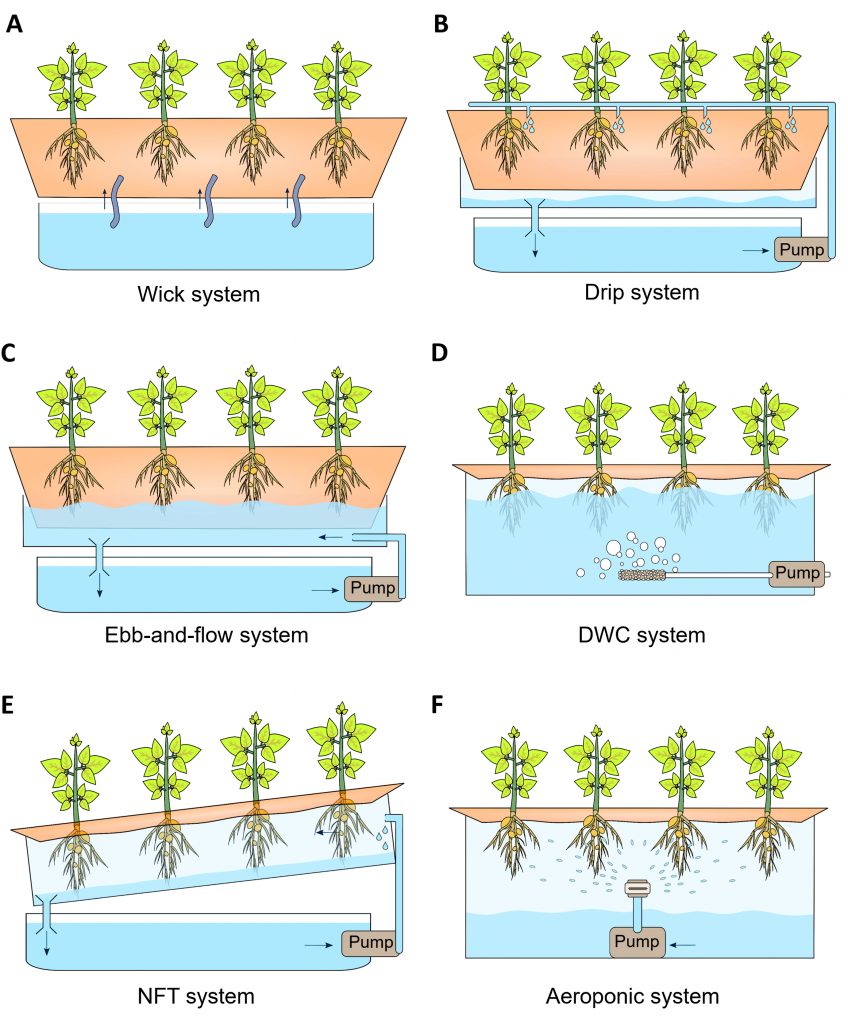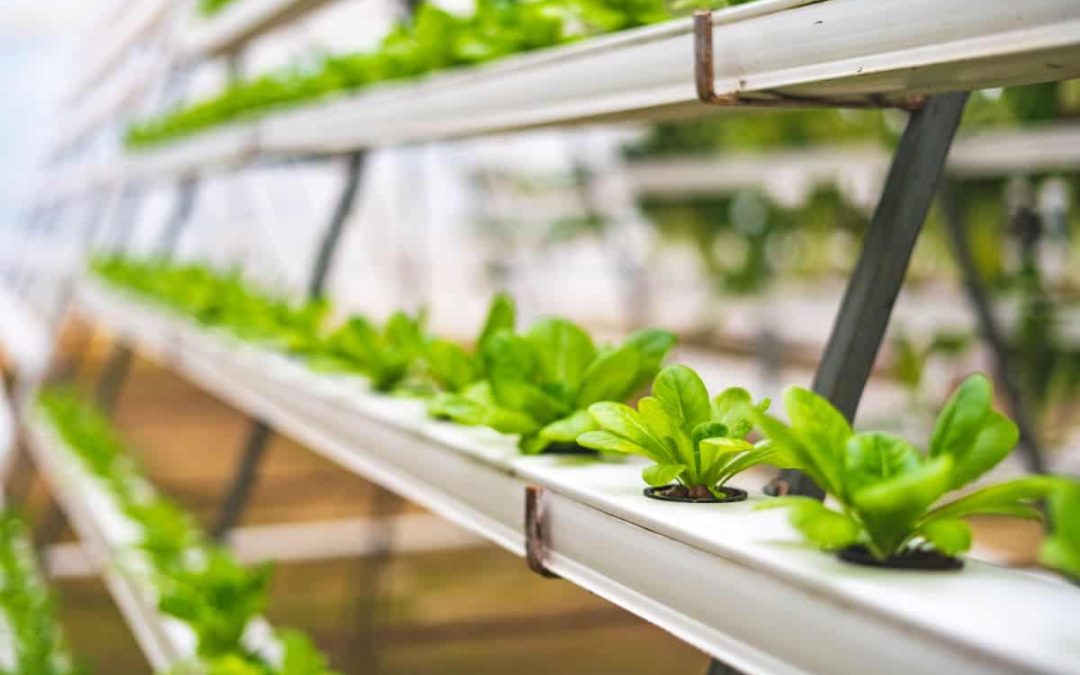Contents
- 1 Can You Grow Plants Without Soil? Exploring Hydroponic Options
- 1.1 What Is Hydroponic Gardening?
- 1.2 How Plants Grow Without Soil
- 1.3 Benefits of Growing Without Soil
- 1.4 Common Types of Hydroponic Systems
- 1.5 Best Plants to Grow Hydroponically Indoors
- 1.6 What You’ll Need to Start a Hydroponic Garden
- 1.7 Tips for Hydroponic Success
- 1.8 Common Problems (and How to Fix Them)
- 1.9 Related Articles
- 1.10 Final Thoughts on Growing Plants Without Soil
- 2 AUTOMATE YOUR PLANT CARE
Can You Grow Plants Without Soil? Exploring Hydroponic Options
Most people assume healthy plants need soil — but what if you could grow them faster, cleaner, and with less mess? Hydroponic gardening makes that possible.
By growing plants in nutrient-rich water instead of soil, hydroponics offers a modern, efficient way to garden indoors — perfect for small spaces, apartments, or anyone tired of dealing with dirt.
Let’s explore how hydroponic systems work, their benefits, and how you can start your own setup right at home.
What Is Hydroponic Gardening?
Hydroponics is a growing method where plants take up nutrients directly from water instead of soil. The system delivers oxygen, minerals, and hydration straight to the roots — everything plants need to thrive.
Because the nutrients are available instantly, plants can focus on growth instead of searching through soil.

How Plants Grow Without Soil
In soil, roots spread out to find nutrients and water. In hydroponics, those same nutrients are dissolved in water and delivered evenly around the roots.
Each system typically includes:
A reservoir: Holds the nutrient solution.
A pump or wick: Moves water to the plant roots.
A grow tray: Supports the plants above the water.
Grow lights: Provide consistent light for photosynthesis.
Because you control every variable — light, nutrients, and oxygen — growth tends to be faster and more predictable than traditional soil gardening.
Benefits of Growing Without Soil
Hydroponic systems offer several unique advantages that make them ideal for indoor gardeners:
Faster growth: Plants grow up to 30–50% faster because nutrients are instantly available.
Cleaner setup: No soil, less mess, and fewer pests.
Water-efficient: Uses up to 90% less water than traditional gardening.
Space-saving: Vertical or countertop designs fit in tight areas.
Year-round growth: Controlled lighting means no seasonal limits.
Many gardeners notice stronger root systems and higher yields once they switch to hydroponics.
Common Types of Hydroponic Systems
There are several methods for growing plants hydroponically. Here are the most popular options for home setups:
1. Deep Water Culture (DWC)
Roots sit directly in nutrient-rich water while an air pump provides oxygen. Simple and great for beginners.
2. Wick System
A passive setup that uses absorbent wicks to draw nutrients up from the reservoir — low maintenance and inexpensive.
3. Nutrient Film Technique (NFT)
A thin film of water continuously flows over the roots, ideal for herbs and leafy greens.
4. Ebb and Flow (Flood and Drain)
Water floods the grow tray periodically, then drains away, providing both nutrients and oxygen.
5. Aeroponics
Roots are misted with a nutrient solution instead of submerged — the most advanced and efficient option, often used commercially.

Best Plants to Grow Hydroponically Indoors
Not every plant thrives in water-based systems, but many edible and ornamental species do beautifully.
Top beginner choices:
Lettuce and leafy greens (spinach, kale, arugula)
Basil, mint, parsley, cilantro
Strawberries
Cherry tomatoes
Peppers
Ornamental plants like pothos or peace lilies
Root vegetables like carrots or potatoes, however, need soil to develop properly.
What You’ll Need to Start a Hydroponic Garden
Starting hydroponics at home is easier than it sounds. Here’s a quick checklist of what you’ll need:
Hydroponic kit or system (countertop or bucket type)
Nutrient solution formulated for hydroponics
pH test kit to monitor nutrient absorption levels
Grow lights (LED full-spectrum)
Net pots and grow medium (clay pebbles or coco coir)
A compact hydroponic kit with built-in lights and nutrients can make setup simple, especially for beginners. You can find starter hydroponic systems and LED grow lights on Amazon — ideal for creating a clean, space-efficient indoor garden.
Tips for Hydroponic Success
Monitor pH regularly: Aim for a range of 5.5–6.5 for most plants.
Change nutrient solution every 2–3 weeks.
Keep water oxygenated: An air pump helps prevent root rot.
Use filtered water if your tap water is hard or high in chlorine.
Clean the system monthly to avoid algae buildup.
Consistent maintenance ensures clean water, healthy roots, and maximum yields.
Common Problems (and How to Fix Them)
Even hydroponic systems have challenges:
Algae growth: Caused by too much light exposure to the reservoir. Cover tanks or use opaque containers.
Nutrient imbalance: Yellow leaves can indicate nitrogen or iron deficiency — adjust the nutrient mix.
Root rot: Usually due to low oxygen — increase airflow or reduce water levels.
Slow growth: Check pH, lighting hours, and nutrient concentration.
Related Articles
- How Smart Sensors Can Save Your Houseplants
- Small-Space Gardening Tools
- How to Create the Perfect Watering Schedule for Indoor Plants
Final Thoughts on Growing Plants Without Soil
Growing plants without soil isn’t just possible — it’s one of the smartest ways to garden indoors. With hydroponics, you control every aspect of growth, eliminate mess, and enjoy fresh herbs or veggies all year long.
Hydroponic gardening blends science with simplicity, making it perfect for modern homes. Whether you start small with a countertop system or build a custom setup, the rewards are fast, clean, and incredibly satisfying.
For more insights on sustainable hydroponics, visit The Royal Horticultural Society’s hydroponic growing guide.
BUILD YOUR OWN SMART PLANT SYSTEM
AUTOMATE YOUR PLANT CARE
Use sensors, timers, and simple DIY tech to automate watering and light — no more guessing when to care for your plants.

